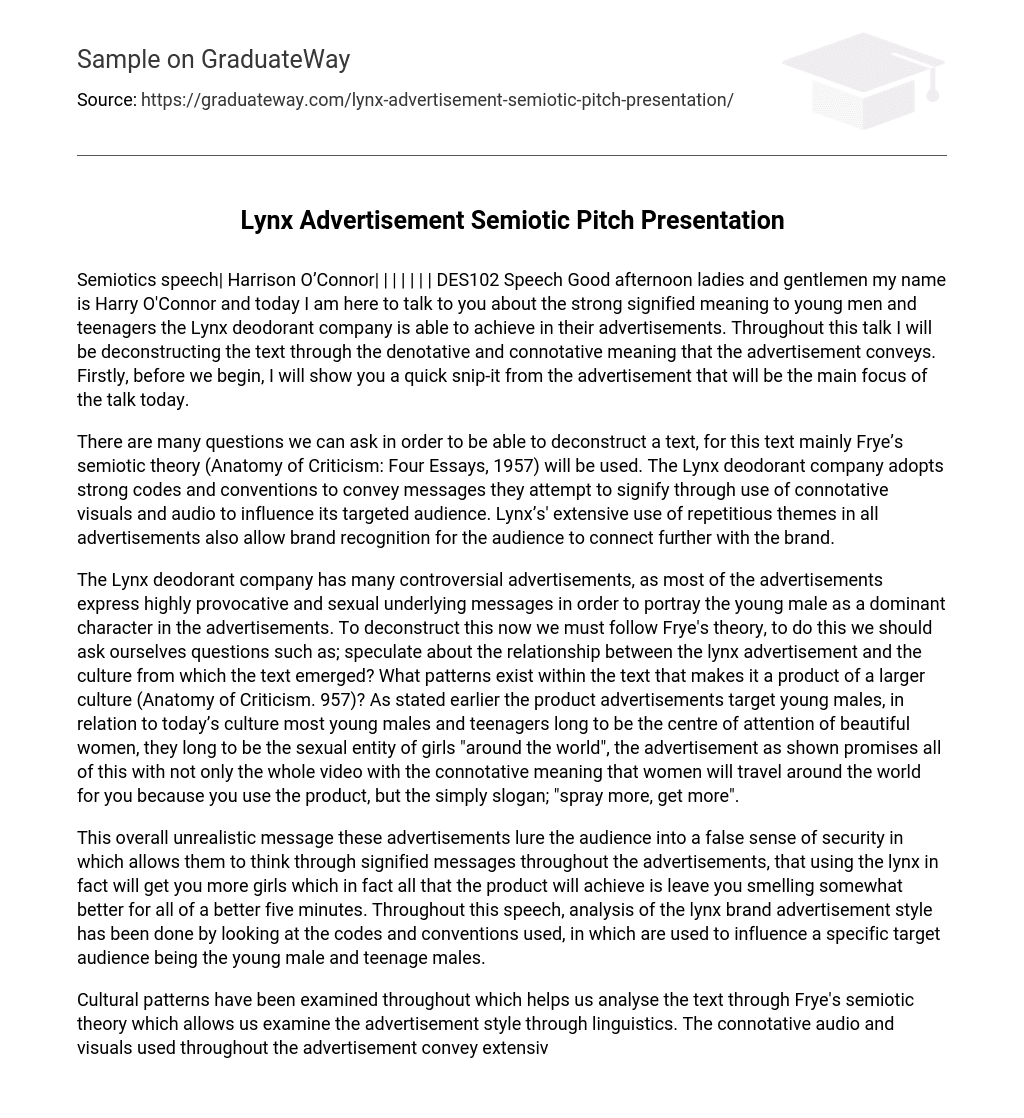This presentation aims to explore the significant impact Lynx deodorant commercials have on young men and teenagers. By analyzing the denotative and connotative messages communicated in these advertisements, we will unravel the underlying meaning they possess. To start off, let me first share a brief excerpt from the ad that will be the central focus of our discussion.
In order to deconstruct a text, we can ask numerous questions. For this particular text, we will primarily be utilizing Frye’s semiotic theory (Anatomy of Criticism: Four Essays, 1957). The Lynx deodorant company employs powerful codes and conventions to communicate messages that they aim to convey. They achieve this through the utilization of connotative visuals and audio that have the ability to influence their intended audience. Additionally, Lynx employs repetitive themes in all of their advertisements, which enhances brand recognition and fosters a stronger connection with the brand for the audience.
The Lynx deodorant company is well-known for its controversial advertisements, which often convey provocative and sexual messages. These advertisements aim to portray young men as dominant figures. In order to analyze these advertisements, we can apply Frye’s theory. To do so, we should question the relationship between the Lynx advertisement and the culture it originates from. Moreover, we should identify any patterns within the advertisement that reflect larger cultural influences (Anatomy of Criticism. 957).
The product advertisements are targeted towards young males who wish to be desired by beautiful women. In contemporary society, many young males and teenagers strive to capture the attention of attractive women. They yearn to be seen as objects of desire for girls worldwide. The ads imply that using the product will result in women traveling from various countries specifically for the user. This notion is further reinforced by the slogan “spray more, get more.”
The advertisements for lynx create an unrealistic message that tricks the audience into thinking that using the product will attract more girls. However, in reality, the only thing the product can achieve is making you smell slightly better for a short amount of time. This analysis of lynx brand advertisements examines the codes and conventions employed to influence a specific target audience, namely young and teenage males.
The analysis of cultural patterns allows us to examine the text using Frye’s semiotic theory, which allows us to analyze the advertisement style using linguistics. The connotative audio and visuals used in the advertisement repeatedly convey provocative and sexual underlying messages, as seen in the previous advertisement. Thank you for attending the seminar and listening.
References
- Case , T. (2010, 10 19). Structualism and semiotics. Retrieved from http://owl. english. purdue. edu/owl/resource/722/07/
- Ayre , J. (1992). Northrop frye . Retrieved from http://www. thecanadianencyclopedia. com/articles/northrop-frye
- Wright , R. (1998, 08 29). Semiology – roland barthes – theories. Retrieved from http://www. ic. arizona. edu/~comm300/mary/semiotics/barthes. theory. html
- Wright, R. (1998, 09 14). Semiological terms – roland barthes. Retrieved from http://www. ic. arizona. edu/~comm300/mary/semiotics/barthes. terms. html





